Have you been looking for a way to make your product more sustainable but don’t know where to start? Or do you feel guilty whenever you throw something in the trash that you just know will end up in the landfill? We’d like to introduce you to some materials which can help you to consider more sustainable ways to design your next product!
Sustainable materials are an essential part in promoting a sustainable design practice and reducing the environmental impacts of product design. To clarify, they are materials which are produced through environmentally friendly methods, have a low carbon footprint, and those which are biodegradable, and/or can be recycled.
Here is a list of some sustainable materials that you should think about adding to your design practice:
Recycled Sustainable Materials
Recycled Plastic
Plastic recycling is the process of reforming plastic waste into new products, after crushing, washing and pelletizing them. The most commonly recycled plastics are PET (water bottles and plastic trays), HDPE (milk cartons and shampoo bottles), and PP (yogurt containers, margarine tubs). Next time you’re disposing of a plastic product, take a look at the little number etched into it. This is called the resin identification code, and it tells you what kind of plastic the product is made of. The lower the number is, typically signifies how easy it is for it to be recycled. It’s not that the higher numbered plastic can’t be recycled. There are just not as many facilities in place that have invested in these harder-to-recycle plastic types. Although only a small percentage of our waste gets recycled, this process reduces our dependency on the landfill, conserves our resources and protects our environment.
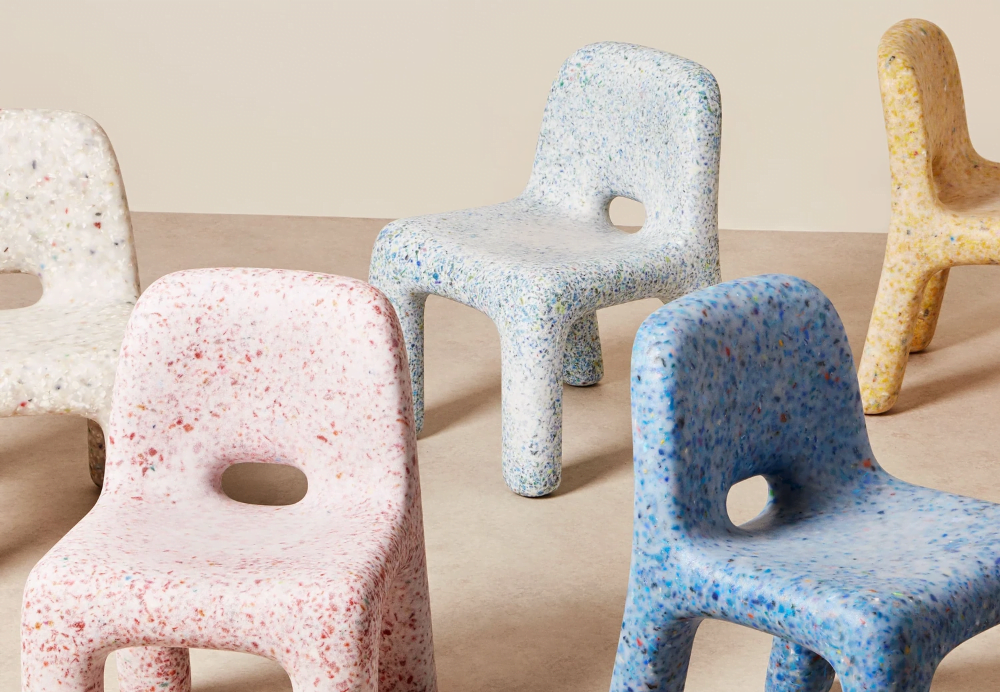
Ultra-Pink Charlie Chair, EcoBirdy
One example of recycled plastic in action is EcoBirdy, They are a furniture design company that make sustainable products for kids. They craft their furniture from recycled toys and other waste from schools, after sorting and cleaning it. Ecobirdy designs their products to be fully recyclable as well, promoting a closed-loop system of plastic recycling.
Aluminum
Aluminum is a lightweight and strong metal. It is commonly used for cans, foils, kitchen utensils, lightweight bicycles and aeroplane parts.
This material is infinitely recyclable, and is currently the most recycled material worldwide. In fact, approximately 67% of all aluminum cans that are purchased and consumed are recycled. Think about how often you drink a can of soda. Every one of those cans can be remolded and used again! The recycling process involves shredding, re-melting, and re-molding the material. This makes it much cheaper and 95% more energy efficient than producing virgin aluminum.
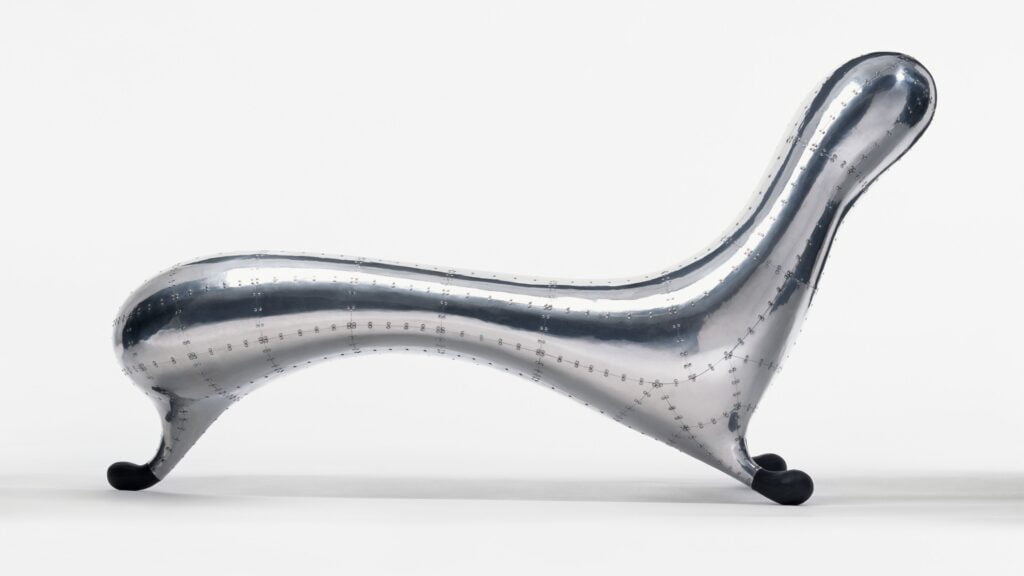
Due to its high strength to weight ratio, aluminum is used in a variety of intricate product designs. From the Macbook’s material casing, to modern airplanes, it is a very versatile material. One very notable usage of this material is the Lockheed Lounge chair, designed by James Newson in 1988. You may recognize it from Madonna’s 1993 music video for her hit song rain. Or just for its iconic and futuristic design. Newson crafted this organic form with an aluminum exterior, over the course of two years. It is now the highest grossing item ever to be sold at an auction!
Steel
Steel is the most recycled material on the planet. It is 100% recyclable and approximately 93% of steel is recycled by consumers. It is is very strong and durable, with an infinite circular longevity. While some materials are down-cycled into lower-quality products, steel can be recycled over and over while maintaining the same properties.
If you are an industrial designer, you’d know that stainless steel is a very important material. It is commonly used metal in cookware, kitchen utensils, surgical instruments, appliances, and vehicles, amongst others.
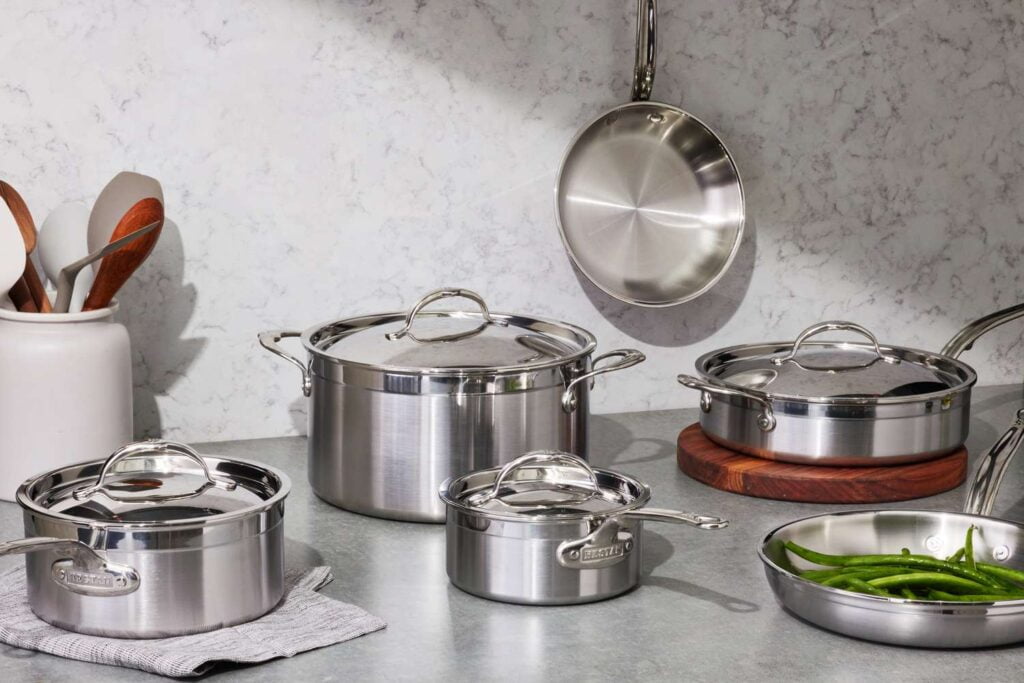
Stainless Steel Cookware Set, Hestan Probond
To put it briefly, use recycled materials in your next project to promote a circular economy. Metals such as aluminum and steel can be recycled indefinitely without any quality or integrity loss. Furthermore, it is essential to recycle plastic to minimize waste and keep our landfills as empty as possible.
Biodegradable Sustainable Materials
Bamboo
Bamboo is growing in popularity just as fast as the plant does. It is a renewable resource and is the largest species in the grass family. It is becoming increasingly popular for its interesting material properties and its ecological benefits. In fact, due to its high-density, and fast grow-rate, bamboo stores more CO2 and releases more oxygen into the atmosphere than other tree species. To illustrate, imagine a standard baseball pitch; this measures about one hectare. One hectare of bamboo can draw in 60 tons of CO2 out of the atmosphere per year! In addition, the same crop can continue to grow after harvesting without the need for replanting or pesticides.
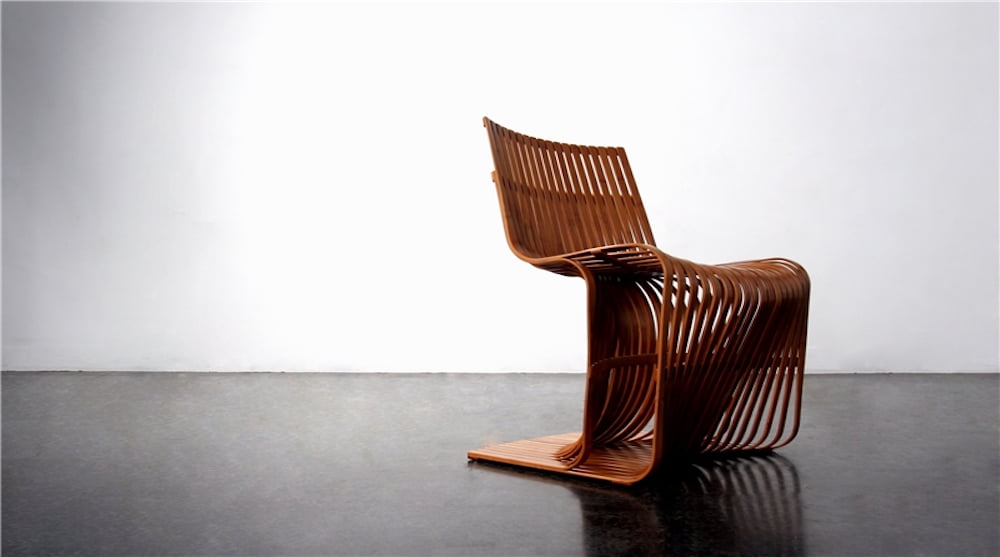
Bamboo is extremely flexible and durable, and its tensile strength surpasses steel. Consequently. industrial designers have been taking this material to its limits. They have been experimenting with bamboos mechanical properties and its graphic linear form. For example, Konstantin Grcic revolutionized the furniture industry with his chair, ’43’. Specifically, this was a 43-slatted ergonomic bamboo chair, made in collaboration with the National Taiwan Craft Research Institute and Taiwan Design Center. This chair highlights the unique potential of bamboo’s tensile strength to increase user comfort while also promoting sustainability.
Cork
Similarly, cork has been increasing in popularity for its sustainable properties. It is a renewable material harvested from the bark of the cork oak. The bark is harvested every nine years, with trees living up to 150 years. In other words, one cork tree can be harvested 10-15 times! Cork is harvested by extremely skilled farmers and this process does not damage the trees. Cork groves are abundant in biodiversity, absorb millions of tons of CO2 per year, and provide defense against desertification and erosions in these areas.
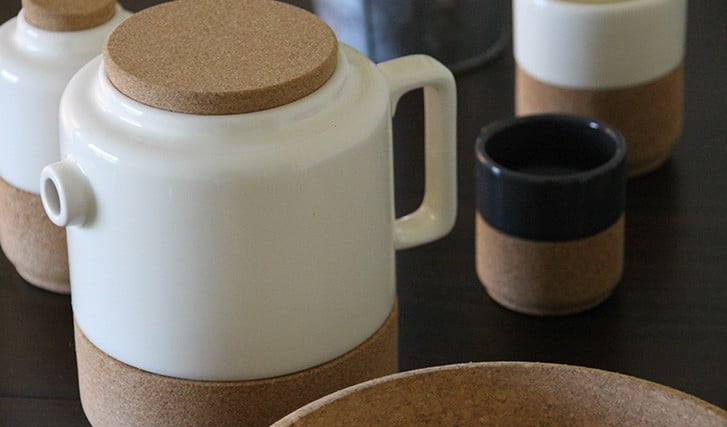
Ceramic and cork teapot, Corkway
You may assume that cork is only used in the wine industry. On the contrary, it is being used in a variety of different products for its extremely versatile and interesting properties. Cork is impermeable, buoyant, durable, fire resistant, and completely reusable. This makes it a great insulator, while also giving products a soft and aesthetic touch. As a result, industrial designers have integrated cork into a variety of products. These include items such as fireplace insulation, grips and handles, shoe soles, tableware, and more. Be it for its material insulating properties, or for its standout aesthetic texture, keep cork on your radar for your next product!
Conclusion
In conclusion, consumer markets are becoming increasingly aware of the impacts that product manufacture has on the environment. As a result, sustainability is becoming increasingly important in industrial design. By using sustainable materials in your product design, you can encourage a circular economy, reduce waste, and conserve our resources for future generations. Above all, consider bamboo, cork, recycled materials, and materials with circular properties next time you are designing a product!
Check out our article, How to Design Products that are more Environmentally Sustainable, to learn how you can implement other sustainable practices into your product design practice.